For our second of July's Galactoscopes, we have quite the mixed bag: two winners and two losers. Aren't you glad you've got us to navigate the dross for you?
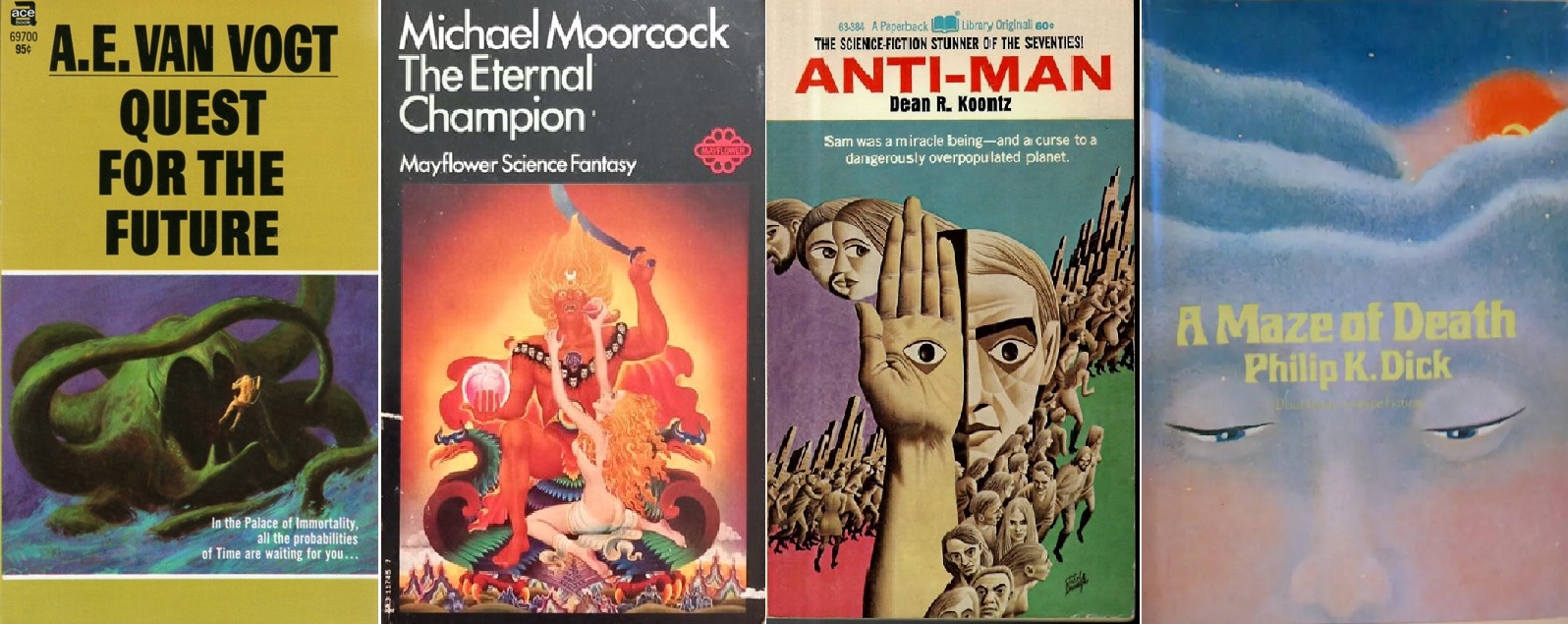
For our second of July's Galactoscopes, we have quite the mixed bag: two winners and two losers. Aren't you glad you've got us to navigate the dross for you?


by David Levinson
A piece of the rock
Anyone who pays more than casual attention to U.S. domestic news is probably aware of the Black Power movement, but how many have heard of the Red Power movement? Those whose ancestors were in what is today the United States have been shamefully treated. They’ve been repeatedly driven from their homes and sacred lands, seen treaty after treaty ignored and violated, been robbed of their languages and religions, and much more. Now some of them are trying to regain some of what they’ve lost.
Back in 1963, the federal prison on the island of Alcatraz in San Francisco Bay was declared no longer fit for purpose and shut down. A Sioux woman living in the area recalled that the 1868 Treaty of Fort Laramie promised that land occupied by the federal government would revert to the native peoples if it was no longer in use. In March of the following year, she and several others staged a four-hour occupation of the island and filed a claim. They left when threatened with felony charges.
Last October, a fire destroyed the San Francisco Indian Center, and the loss of the space reminded Native Americans in the Bay Area of one of the proposals for the use of Alcatraz by those earlier protesters. On November 20th, a group of 89 people calling themselves Indians of All Tribes set out to reach Alcatraz, with fourteen of them successfully reaching the island. They have since been joined by many more; there are a few hundred people there now.
 Some of the occupiers a few days after arriving on Alcatraz.
Some of the occupiers a few days after arriving on Alcatraz.
There have been difficulties. Water and electricity are particular problems. Many hippies flocked to the island until non-Indians were prohibited from staying overnight. A fire in early June destroyed several buildings. And in May, the government began the process of transferring Alcatraz to the National Park System in order to blunt the occupiers’ claim.
However, they’ve garnered a lot of attention and support, including from many celebrities. They have also inspired other protests in favor of Indian rights. After a Menominee woman in Chicago was evicted following a rent strike over repairs not being made, a protest camp was set up in a nearby parking lot, starting with a tepee borrowed from the local American Indian Center. Since it’s right next to Wrigley Field, where the Cubs play baseball, it’s gotten a lot of attention and has been dubbed “little Alcatraz” in the local press.
Will all of this achieve anything? Maybe. The scuttlebutt in Washington is that Nixon is planning a proposal to Congress sometime this month regarding Indian rights. There are no details right now, but it’s expected that he will call for greater self-determination and an end to forced assimilation.
Continue reading [July 2, 1970] Matters of conscience (August 1970 Venture)

by Gideon Marcus
Mazel tov!
This article is going to be short on news as the Marcus family has been occupied this past week. The Journey has had its first inter-staff wedding! The Young Traveler and Trek Correspondent Elijah broke the glass under the chupah on the 19th. Sadly, the pictures aren't back from the Fotomat, so in lieu of that, here is a shot from my nephew David's wedding to Ada Argov in Israel from 1962.

The issue at hand
Between last-minute dress alterations and sifting through RSVPs, I managed to snatch time to read the stories of this month's Magazine of Fantasy and Science Fiction. Unlike the marriage of Lorelei and Elijah, it is not a flawless affair, but it is also not without its charms. Let's take a look:
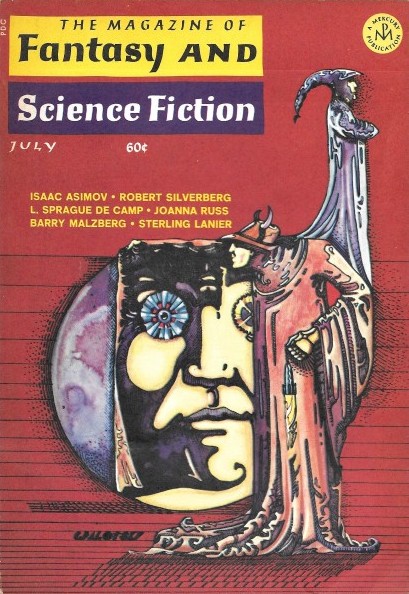
by Ronald Walotsky
Continue reading [June 24, 1970] In love with "Ishmael in Love" (July Fantasy and Science Fiction)

by Brian Collins
There must be a growing demand for original anthologies of science fiction, because they keep coming—both standalone titles and series. Infinity One is, going by its title, the first in yet another series of these, although notably there is one reprint between its covers (really two reprints, as you'll see), a story that many readers will already be familiar with. Robert Hoskins is an occasional author-turned-agent-turned-editor, whose high position at Lancer Books has apparently resulted in Infinity One. Will there be future installments? Does it really matter? We shall see.
The tagline for Infinity One is “a magazine of speculative fiction in book form,” which strikes me as a sequence of words only fit to come from the mouth of a clinically insane person. This is a paperback anthology and nothing more nor less. I mentioned in my review of Nova 1 last month that Harry Harrison claimed that he simply wanted to put together an anthology of “good” SF, although I’m not sure if Hoskins had even such a basic goal in mind.
Infinity One, edited by Robert Hoskins
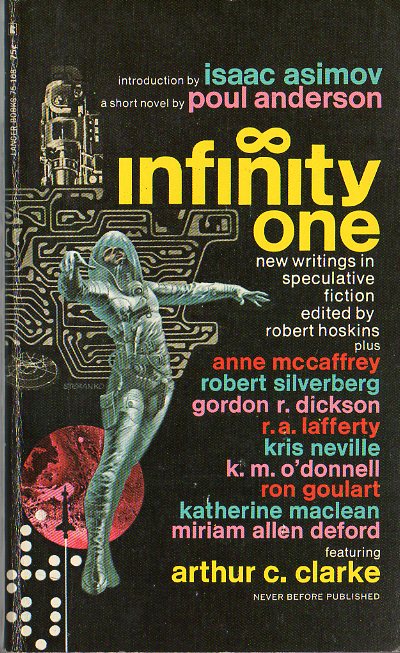
Continue reading [April 8, 1970] All Too Finite (Infinity One, edited by Robert Hoskins)

by Gideon Marcus
To Venus! To Venus!, by David Grinnell
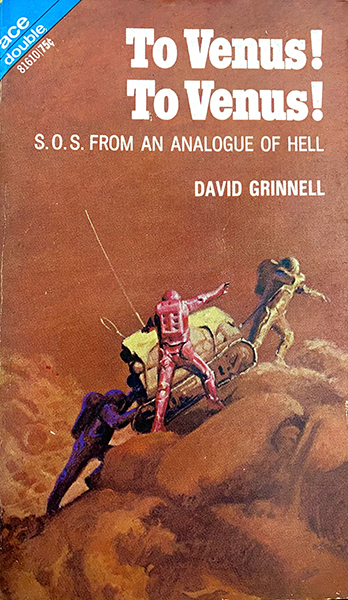
cover by John Schoenherr
Warning: the latest Ace Double contains Communist propaganda!
The premise to David Grinnell's (actually Ace editor and Futurian Donald Wolheim) newest book is as follows: it is the 1980s, and the latest Soviet Venera has confirmed the initial findings of Venera 4, not only reporting lower temperatures and pressures than our Mariner 5, but spotting a region of oxygen, vegetation, and Earth-tropical climate.
And they're launching an manned expedition there in less than two months.
Continue reading [March 14, 1970] To Venus and Hell's Gate… are we Out of Our Minds?

by Victoria Silverwolf
What Time Is It?
That's a question that you can answer with more confidence than before, if you're willing to shell out a whole bunch of bucks. On Christmas Day the Japanese company Seiko introduced the world's first quartz wristwatch. (There have been clocks using quartz crystals, but not anything this small.)
As I understand it, quartz crystals vibrate in a precise manner when voltage is applied to them. Thus, the tiny bit of quartz inside the watch, powered by an itty-bitty battery, provides an unvarying pulse that supplies extraordinary accuracy.
The Quartz Astro 35SQ keeps time to within five seconds per month, which is said to be about one hundred times better than a mechanical watch of good quality.
The catch? You have to pay 450,000 yen for it. That's well over one thousand dollars. You can buy a nice new car for the price of two watches.

Quite a stocking stuffer.
If you like, you can use your fancy new timepiece to measure how long it takes to peruse the latest issue of Fantastic.
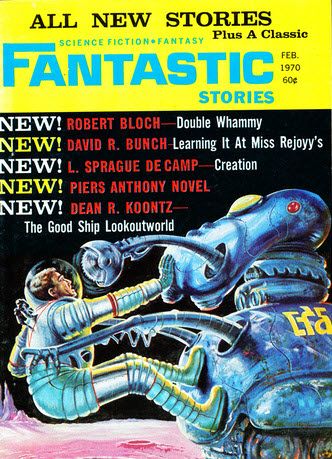
Cover art by Johnny Bruck.
Or maybe the publishers can measure how much time they saved by copying the cover art from yet another issue of Perry Rhodan instead of waiting for an artist to create a new one.

The title translates to The Cannons of Everblack. Note the use of English for what I presume is the name of a planet.
Continue reading [January 10, 1970] Time On My Hands (February 1970 Fantastic)
[New to the Journey? Read this for a brief introduction!]

by Gideon Marcus
Being #2… stinks
On the scene at the launch of Apollo 12, President Nixon assured the NASA technicians that America was #1 in space, and that it wasn't just jingoism—it was true!
Well, even a stopped clock, etc. In fact, all accounts suggest the Soviet space program had some serious setbacks last year, the results of which will be felt through at least to 1971. Schedules got shifted as large rockets were earmarked for purely military service in response to the escalating (now calmed) Sino-Soviet crisis. But the biggest issue was reported in Aviation Weekly last month: apparently, the Soviets lost a Saturn-class booster on the launch pad before liftoff last summer. I hadn't even heard that such a thing was in development! The rocket's loss has set back the USSR's manned space program by at least a year, resulting in tepid non-achievements like their recent triple Soyuz mission rather than the construction of a space station or a trip to the Moon.

This is actually the rocket from the Soviet film The Sky Calls (American title: Battle Beyond the Sun)
It didn't help that the Soyuz pads were occupied during the summer as the Soviets tried to match our lunar efforts. It may well be that their Saturn was rushed to service too soon, and similar gun-jumping may have caused the loss of the Luna 15 sample-return mission.
Speaking of which, in September, the Soviets launched Kosmos 300 and 305. Both of them were heavy satellites that went into the orbit usually used for lunar Zond missions. And then they reentered shortly thereafter…in pieces. It's not certain if these were to be circumlunar flights or retries of Luna 15. Either way, they didn't work out, either.
Meanwhile, the Apollo mission moves blithely along. Apollo 13 will go to the Moon next March to Fra Mauro, a landing site photographically scouted out by the Apollo 12 folks. This chapter of the Space Race is well and truly over, won by the forces of democracy championed by such luminaries as Spiro Agnew.
That's a good rock
Speaking of Apollo 12, you may recall earlier this month I talked about analysis of the Moon rocks brought back by Apollo 11. A similar report has come out about the rocks brought back by Conrad and Bean. Dr. Oliver A. Schaeffer of New York State Univ. at Stony Brook says they are only 2.2 to 2.5 billion years old—1-2 billion years younger than the Armstrong and Aldrin's samples. This means some kind of surface activity was ongoing on the comparatively quiet Moon—meteorite strikes and/or vulcanism, we don't know yet.

NASA astronaut Charles "Pete" Conrad, commander of the Apollo 12 mission, holds two moon rocks he and Alan Bean brought back to Earth. Taken last month at Manned Spacecraft Center's Lunar Receiving Laboratory.
Also, Dr. S. Ross Taylor of Australian National Univ. says the Apollo 12 samples contain about half the titanium as the Apollo 11 rocks and also more nickel, though otherwise, their chemistry is similar. Thus, the Moon is far from homogeneous, and we have just scratched the surface (so to speak) of the mystery that is the Moon. As we get more samples from more sites, a better picture will come together, but it will undoubtedly take time; imagine trying to contemplate all of Earth's geologic diversity from just two short digs?
Holiday Feast
It may have been rocky going on the Moon (yuk yuk) but it's fair sailing with this month's issue of The Magazine of Fantasy and Science Fiction!

Cover by Mel Hunter

by Gideon Marcus
Flying
By the time this makes press, we'll already (hopefully) be on the flight back to San Diego. As with most publications, though we try to hit the press as fresh as possible, there is a delay between writing and printing. This is exceptionally unavoidable this time 'round because…
…we're off to Woodstock!
Specifically, the Woodstock Art & Music Fair, an "Aquarian Exposition" in White Lake, New York. There's an art show and a craft bazaar and hundreds of acres of sprawl, but the main draw is the music: 27 bands, from Jimi Hendrix to Janis Joplin to Glen Beck to Sweetwater to Ritchie Havens, playing in 12-hour swathes, 1pm to 1am, every day (except the first—then, it's 4pm to 4am, apparently).

Well, we couldn't miss a chance to see something like this, so we booked tickets to Idlewild…er… JFK, chartered a bus, and we're headed for Max Yasgur's farm. This isn't our first rodeo, so we've taken a few precautions:
1) We left early to avoid the rush. With more than 100,000 expected to show up for this thing, there's going to be traffic jams;
2) We bought supplies in case we can't get what we want to eat;
3) We brought our own toilets! A handy trick we developed camping up in Sequoia country: take a bucket, fill it a quarter way with Kitty Litter, and stick a toilet seat on top. It works as well for people as it does for cats, and you don't have to dig latrines!

So, we're hopeful to get good seats and enjoy, as much as anyone can, three days of fun in the open air. We'll have a full report when we get back!
Dragging

by Chesley Bonestell
Continue reading [August 24, 1969] Flying and dragging (September 1969 Fantasy and Science Fiction)

by David Levinson
Joining the mainstream
Every Sunday, the New York Times publishes a list of the best selling books of the last week. It tends to be a mix of high-brow, literary novels and potboilers—especially spy thrillers—along with the occasional gothic romance and a mystery once in a blue moon. But to the best of my knowledge, it’s never had a science fiction novel prior to this year. As of the latest list, it has not one but two, both of which have been reviewed here at the Journey. There’s even a third that could be said to have sfnal elements if you stand on your head and squint a bit.
In its tenth week on the list and slipping one spot to number six is Kurt Vonnegut’s Slaughterhouse-Five. Of course, Vonnegut is none too happy about his work being labelled science fiction. Meanwhile, Michael Crichton’s The Andromeda Strain hit the list for the first time in eighth place. The potential third novel is Vladimir Nabokov’s Ada, or Ardor, which seems to be set on an Earth exactly like ours with a slightly different history or on a counter-Earth on the other side of the sun. Other than that, there doesn’t seem to be much science fiction in the plot, so I’m not really inclined to include it.
Does this mean our beloved genre has finally hit the big time? Probably not. As I said, Vonnegut doesn’t want to associate with us, and I wouldn’t be surprised if Crichton thinks of his book as a thriller. (I could be wrong, but that’s how it’s being marketed.) 2001 did all right at the box office, but was panned by critics (including some SF critics). Star Trek has been canceled, leaving Land of the Giants—a show so bad it makes Lost in Space look smart—the closest thing to SF on television. But just maybe the boundaries are weakening, even if we wind up having to sneak in the back door with those who won’t acknowledge us.
Sophomore or sophomoric?
The second issue of Mercury Publishing’s second attempt at Venture SF is on the stands. How is it? Well, before we crack it open, let’s look at the outside.
 More geometric shapes and color washes. Art by Bert Tanner
More geometric shapes and color washes. Art by Bert Tanner
Continue reading [July 2, 1969] Merging streams (August 1969 Venture)

by David Levinson
A change is gonna come
Regular readers of Galactic Journey or of SF magazines in general may have noticed that neither Galaxy nor IF published last month. With a bit of detective work, I’ve put together what happened.
The clues are on the masthead. Editor Fred Pohl is now listed as Editor Emeritus, while the editor is Ejler Jakobsson. The publisher is no longer Robert M. Guinn, but Arnold E. Abramson, and Galaxy Publishing has been replaced by Universal Publishing. (That last worried me for a moment, but I quickly remembered that Amazing and Fantastic are put out by Ultimate Publishing under Sol Cohen.)
There’s also an editorial from Fred, talking about the changes. Most importantly, he’s stepping back to focus more on writing. That and the fact that he’s sticking around to look over the new editor’s shoulder (Fred’s words) for a while suggests his departure is voluntary and doesn’t suggest any misgivings about the new ownership on his part. Plus, we should be getting new stuff from him more often.
Who is Ejler Jakobsson? He had a few horror stories back in the late 30s, cowritten with his wife Edith, but if his name sounds familiar, it’s most likely because he was the editor for the revival of Super Science Stories from 1949-1951. Coincidentally, that magazine had been edited by Fred Pohl before it was shut down by wartime paper shortages.
What changes can we expect? Fred prefers to let us see them as they happen, but the promo for next month hints at some. IF is getting a book review column by Lester del Rey. That may or may not mean the end of his “If… and When” column. We’re also getting a twelve part series by Willy Ley, “The Story of Our Earth.” That might suggest some changes over at Galaxy.
Of course, the biggest question is what sort of stories Jakobsson will buy. It will be a while before we get a good feel for that, since there’s bound to be a backlog of stories selected by Pohl. It took several months for the Fermans over at Fantasy and Science Fiction to change the course set by Avram Davidson, but Ted White has wrestled Amazing and Fantastic into a new direction almost immediately. We’ll see, but we should have a good idea by the time we start the new decade.
A bang or a whimper?
Since this is the last issue under Fred Pohl’s leadership, it’s fair to ask what sort of note he goes out on. Will he put out a strong issue, go out on a high note and remind us why this magazine has won three straight Hugos? Or will it be utterly awful and make us glad he’s gone? Not to ruin the suspense, but the July issue is really just another typical, middle-of-the-road example. There’s some good stuff and some not so good. Let’s start with the cover.
 Art credited only as couresy of Three Lions, Inc. but actually by German artist Johnny Bruck.
Art credited only as couresy of Three Lions, Inc. but actually by German artist Johnny Bruck.
Continue reading [June 2, 1969] The ever-whirling wheel (July 1969 IF)